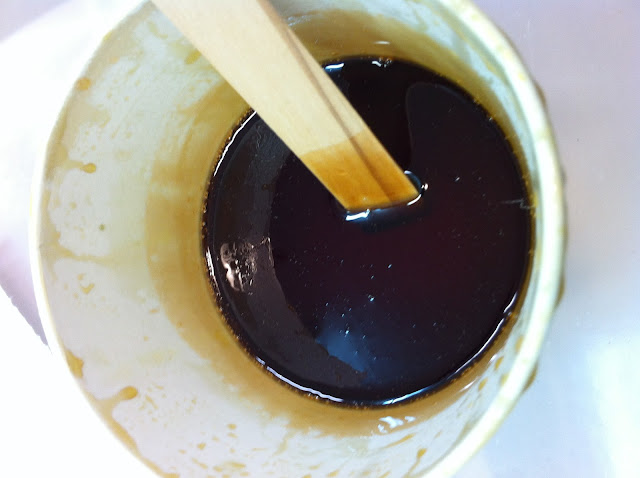Getting started (4.6 hrs)
Toward the end of July, I joined my good friend Mike Beasley (also Long EZ builder) on a pilgrimage to Oshkosh, to attend Air Venture 2011 for my very first time.
 |
| Mike and me in his Long EZ |
I mention it only because this marks the “Point of No-Return” in my project.
Up until now I have spent few dollars, and a considerable amount of free time, educating myself in the art of “Long EZ building”, but July 26th will record my first substantial order from Aircraft Spruce, and the first tangible commitment to the cause.
All kinds of foam, wood, epoxy, BID, UNI, paintbrushes, rollers, squeegees, and the like, were ordered at the show, benefitting from a 10% air-show discount. A couple of weeks later, all these items showed up at my door much to my disbelief.
 |
| Here's how little $2000 will get you. |
That was it! There would be no more going back now!
It took a few more weeks before I could get started, due to my work schedule, but soon enough the time finally arrived.
You might recall my decision to widen the fuselage by two inches. Because of this, one of the first issues I faced was the need to check and revise all measurements and plan dimensions. My friend Mike warned me I would be facing an uphill battle because of this decision, and finally all his admonitions started to ring true.
I decided to study the plans and stay at least one chapter ahead of the parts being worked on, all the while trying to determine what would need changing, and by how much. Once the decision was made on a change, I’d commit it to the plans by way of a red pen.
 |
| Changes in red ink |
End of planning, start of building!
 |
| Enough foam to finish the fuselage |
Chapter #4 begins with shaping the pilot seat-back, and glassing the flat surface. Nothing unusual except for the size of the piece, especially since mine is even wider.
After the new dimensions were transferred onto the foam, I used a saw to cut the first rectangular piece of foam.
 |
| First cut of many to come |
A quick calculation revealed that the sharp bottom-end of the seat should measure approximately 49˚ ( atan (0.8/0.7) ), so I set my table saw for 41˚ (90˚- 49˚), and shaped the bottom edge.
 |
| Surely an overkill, but also fast |
I used the foam as reference to cut the fiberglass I needed, two layers of UNI at 45˚.
 |
| Cutting glass with razor pizza cutter |
Like I had done before, I prepared a batch of micro-slurry...
 |
| Warm hardener and resin straight off the pump |
 |
| After stirring for 2 minutes it's now "pure epoxy" |
 |
| Adding micro-balloons... |
 |
| ... to make micro-slurry |
... and applied it to the foam.
 |
| Note that the edge has been rounded |
Then laid the fiberglass in the correct orientation and used pure epoxy on it.
After the first ply, on went the second at 90˚ to the first one, then more epoxy. After squeegeeing the excess out of the fiber, this is what the part looked like.
With all the excitement of doing my first piece, I forgot to peel-ply the edges of it, and I was comfortably watching television, when the horrifying thought occurred. Luckily, after running back to the shop, I found the part to be still wet, and I promptly rectified the issue.
The next day I used my vibrating cutting tool (a must have, as far as I'm concerned) to effortlessly trim the edges with a minimum of fiberglass dust. Unfortunately, I could not resist the allure of removing the peel-ply (it comes off with a satisfying ripping sound), so I peeled it off with the excuse of educating my neighbor Lou in composite construction.
As enjoyable as it was, this just created more work for me, as I will have to sand it later to make sure I can get a good secondary bonding there, so I resolved to do no more such testing in the future.
 |
| Edge detail |




No comments:
Post a Comment